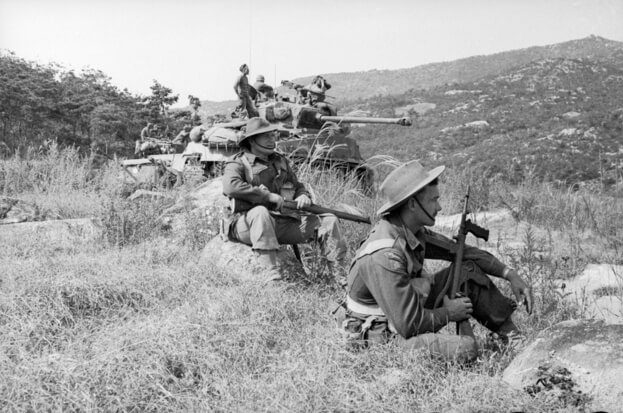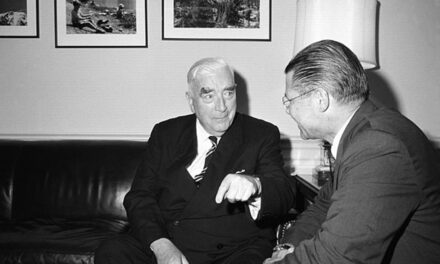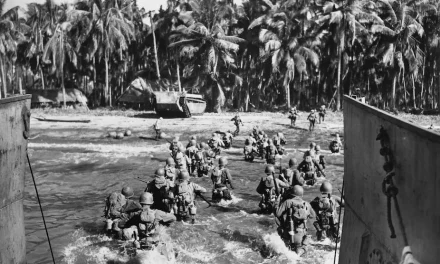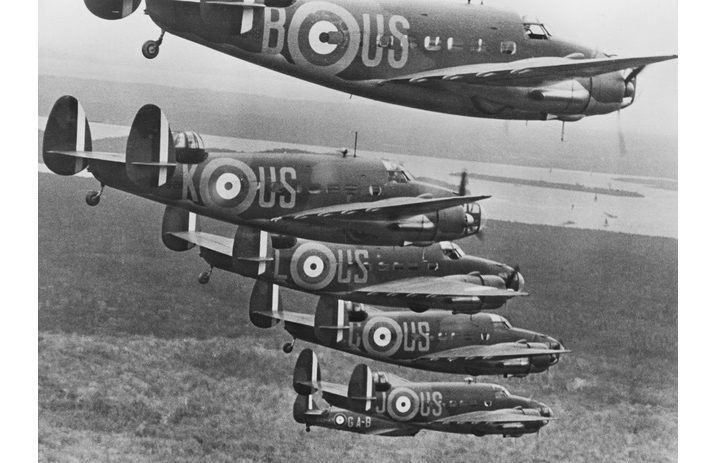Reading time: 4 minutes
In the years leading up to the Korean War, the two future combatants were already fighting each other in a virtually undocumented guerrilla war. North Korean infiltrators and Republic of Korea (ROK) combat units skirmished inside South Korean borders for most of 1949 and early 1950. Thousands were killed. Both sides were accused of provocation and starting local engagements.
By Paul Wallis.
This ongoing military situation was the main issue for the United Nations Commission On Korea (UNCOK). UNCOK was acting as an inspectorate as part of the UN role in South Korea. Military personnel were engaged in monitoring the worsening situation in real time.
Australia’s contribution to UNCOK was its “smallest peacekeeping contingent”, two men acting as military observers. These were highly experienced officers, Major Stuart Peach of the Australian Army and Squadron Leader Ronald Rankin, DFC and bar (Royal Australian Air Force).

Their observation of the ROK forces included with uncanny prescience an evaluation of the military capacity of the ROK troops. The Australians evaluated their equipment, deployment, and capabilities. They had unlimited access to the ROK forces, field positions and command, but no access to North Korea.
The ROK army at this point was basically an infantry force of approximately 90,000 troops at all levels. They were US-trained, and adequate in their role in the low-level fighting in progress. They had been able to manage local engagements with guerrillas and defeat two major battalion-sized incursions, annihilating the North Korean infiltrators.
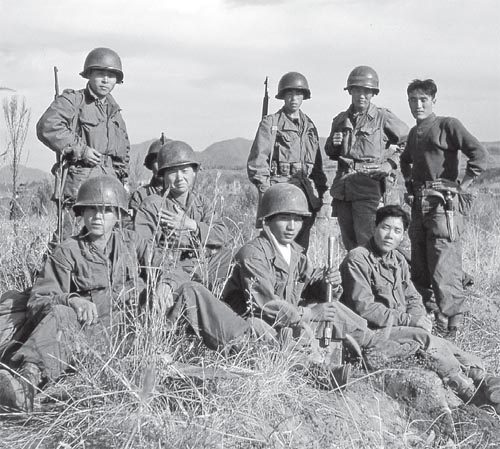
For two weeks, the two Australians travelled, interviewed, and inspected the ROK ground forces. Rankin and Peach summarized in their report that “South Korean army is organised entirely for defence and is in no condition to carry out an attack on a large scale against the forces of the north” (verbatim).
The South Koreans lacked heavy weapons, artillery, and tanks, and had no capacity to mount an offensive operation on any significant scale. This report was to have major international consequences in days to come.
During their inspection, the Australian observers saw no local indications of an attack from the North Korean army during this time. The North Korean forces, in fact, were only just at that time arriving behind the border, and in strength. On the 25th of June, they attacked, driving through the lightly equipped ROK forces.
Unlike the ROK, the North Koreans were well equipped for an offensive, with hundreds of Russian tanks, artillery, and initial overwhelming air superiority. The ROK lost 70,000 of their troop strength in the first weeks of the war, and was effectively smashed.
Simultaneously with the war on the ground began an intensive propaganda war. North Korean Kim Il Sung accused South Korea of starting the war. The military situation escalated severely in a maelstrom of claims and counter-claims.
Small US troop contingents and US Air Force units began to arrive in South Korea in context with a drastically deteriorating military situation. These forces went into action ineffectually and in piecemeal form as the scattered surviving ROK forces were effectively routed.
In the face of an obvious military disaster, the United States proposed support for South Korea in the UN Security Council. The UN Security Council passed Resolution 82, calling for North Korea’s withdrawal to no effect.
The next meeting included the tabling of the UNCOK Peach-Rankin report, effectively proving the case that South Korea was quite incapable of attacking North Korea. Resolution 83 recommended the UN furnish assistance to repel the attack, commencing the official UN intervention in the war. Australia’s smallest peacekeeping force had done its work well.
Below is a great period excellent video examining the beginning of the Korean War.
This video covers the whole duration of the Korean War and uses colourised footage from the time.
Here are some great podcasts looking at the Australian involvement in the Korean War, as well as a detailed analysis of the beginning of the war.
Articles you may also like
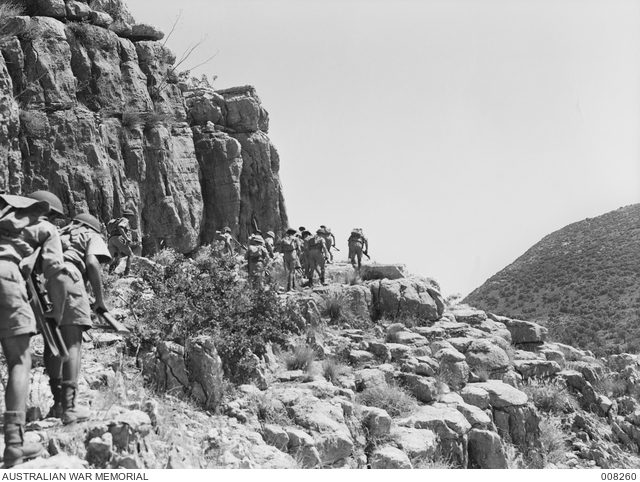
Australia’s war with France: The Campaign in Syria and Lebanon, 1941 – Podcast
AUSTRALIA’S WAR WITH FRANCE: THE CAMPAIGN IN SYRIA AND LEBANON, 1941 – PODCAST Operation Exporter was a little known, but very important campaign for the Australian military. It involved Australian’s fighting a strange war against confused Frenchmen who were not supposed to be our enemy. France had been defeated and subjugated by the Germans. The […]
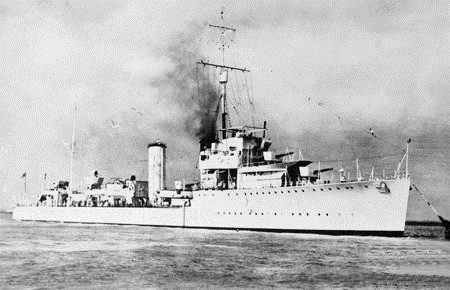
Scrap Iron Flotilla: The Royal Australian Navy at its Best
To the Axis Powers, the Australian flotilla that fought in the Mediterranean during the Second World War appeared to be no threat. Anyone looking at the old, small and slow destroyer group would think the same. Soon, however, the Axis and the rest of the world would learn just how formidable it was. The ‘Scrap […]

Battle of 42nd Street – Anzacs Proving Germany Could be Beaten
Morale can make all the difference on the battlefield. On the 27th May 1941, with the Greek island of Crete close to loss and the Allies in full retreat, a 12 minute moment of madness by Australian and New Zealand troops proved that aggression and bravery could overcome Germany’s elite troops. By Richard Shrubb. Background […]

